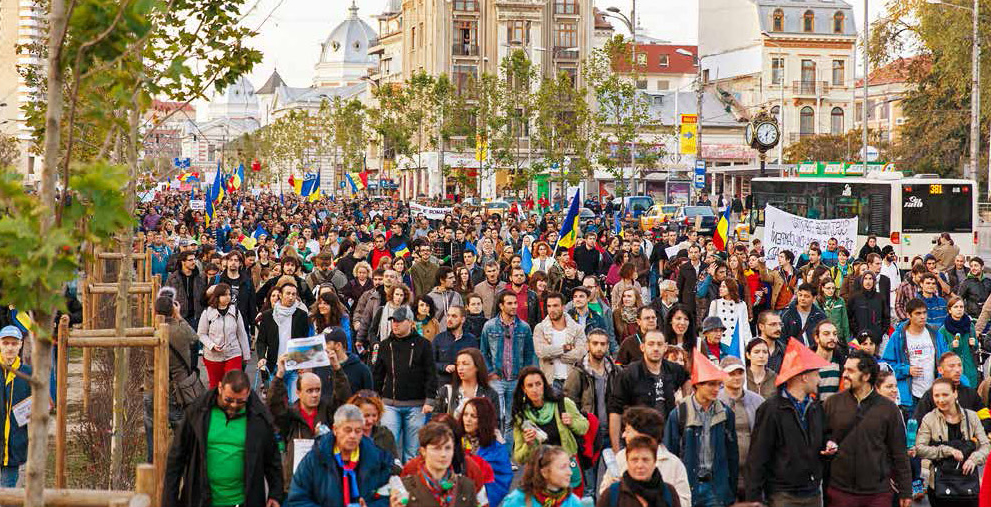Text: Ștefan Ghenciulescu / Photo : Cătălin Georgescu
Research and illustrations: Ioana Lupașcu
The problem with Roșia Montana (the place in Transylvania, the controversial cyanide mining project and the fight against it) is not the focus of this article; instead, we will talk about the marches that have been held in Bucharest for the last three months. Apart from the subject itself, I believe these actions were seminal in terms of using and perceiving the city.
First of all, there is this idea: in order to counteract the complete media boycot, it was hardly enough to just sit in the established place for protests, in the Univeristăţii Square. The marches, some of which were quite long, have carried the protest all the way to the peripheral districts, which are otherwise completely isolated from such events. At one point, and highly in the spirit of a nonhierarchical and democratic organization, the routes for these marches ended up as various proposals on Facebook and were later voted upon freely. Soon enough, a social rhythm appeared – the regular walk on a Sunday afternoon, where you could happily join if and for as long as you wanted.
Mapping the itineraries, we have observed an almost homogenous coverage of the city in certain areas, with understandable focus in the central points (such as the Piaţa Universităţii Square– the end and, most of the time, also starting point of the marches). Other parts of the city remained entirely untouched. This distribution confirms essential landmarks and urban itineraries, but also the discrepancies between the northern area, which is more dynamic, benefits from a greater number of institutions and popular places and is evidently more visible, and the southern area, isolated even worse due to Ceaușescu’s axis.
Any march implies a temporary suspension of a road’s usual use. After many weeks in a row, you get to walk on all the main thorough fares. It is an euphoric sensation to move in the middle of a boulevard otherwise clogged all the time with cars, and to see the city from a unique point of view. The streets look different, the architecture looks different, and you can get a glimpse of a city where people would be more important than cars. Well, for twelve weeks, we got more than a hundred kilometers of actual public space, which made many of us to request much more than that – meaning permanent transformations.
We thank Cătălin Georgescu, self-taught photographer and concerned citizen, for the images. You can find him here.



